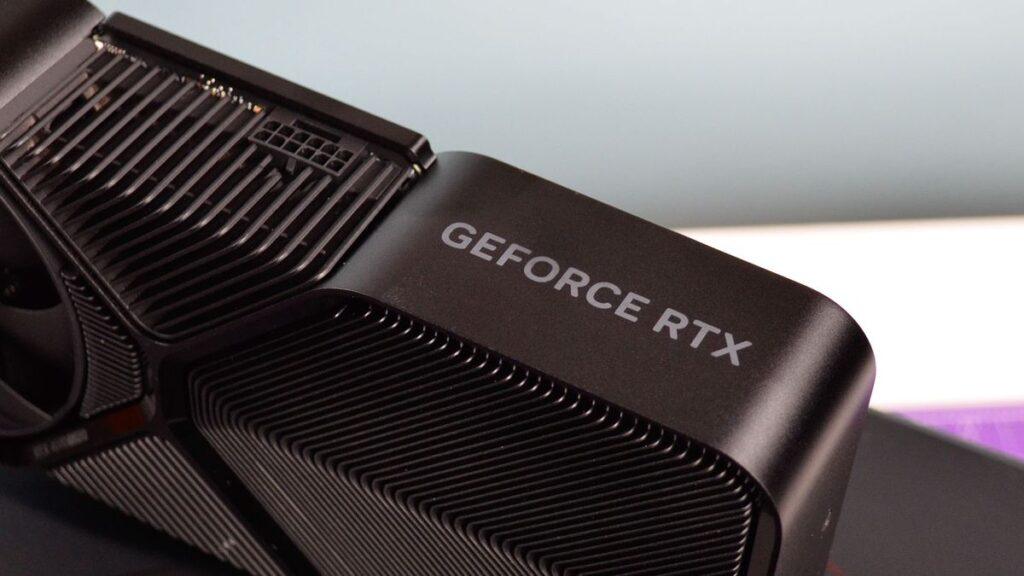Nvidia experienced a memorable 2024 in some ways, and CEO Jensen Huang certainly won’t forget the year in which his company finally overtook Apple as the world’s most valuable company.
We also received a handful of powerful new GeForce GPUs from Team Green, along with a big move on the software front as well, and inevitably, AI continued to be a huge driving force for Nvidia.
Nvidia’s value surpassed $1 trillion in 2023, but it skyrocketed this year, and its stock rose sharply throughout 2024, driven, of course, in large part by its AI-enabled GPUs.
In fact, Nvidia became the most valuable company in the world in June 2024, surpassing companies like Apple and Microsoft, surpassing a market capitalization of $3 trillion. Team Green fell back a bit as the year progressed, but then regained Apple’s pole in November 2024, closing in on a $3.5 trillion valuation. Nvidia also removed Intel from the Dow Jones Industrial Average.
Throughout the year, Jensen was happily stoking the AI furnace, as you might expect. You can buy a lot of leather jackets for the money Nvidia is worth now, and the speed with which this financial rise has occurred has been nothing short of impressive.
Will Nvidia be the first company to reach the $4 trillion mark? It’s a fair bet if the momentum behind AI continues as it has, and perhaps Nvidia will even become a household name over time (something it definitely isn’t yet, despite all this success).
The year of Super graphics cards
Nvidia continued to dominate the desktop GPU market in 2024, to no one’s surprise, to the point of almost becoming a monopoly.
Helping to maintain its momentum here were a trio of new graphics cards for the Lovelace range that Nvidia revealed at the start of the year. These new additions to the best Nvidia GPUs out there were the GeForce RTX 4070 Super, RTX 4070 Ti Super, and RTX 4080 Super. (And yes, we still can’t get over the fact that Nvidia created a ‘Ti Super’ as a way to squeeze an extra model into a crowded mid-to-high-range space.)
These Super GPUs replaced existing models in all but the RTX 4070, which remained in production to run alongside the RTX 4070 Super, but at a cheaper price (obviously).
Overall, the new graphics cards were welcome introductions and powerful offerings, but what wasn’t so welcome were the prices attached to them. In true Nvidia fashion, these mid-to-high-end GPUs were all expensive. In particular, the RTX 4070 Ti Super came up a bit short in our review, being quite overshadowed by the RTX 4080 Super, which we declared was the enthusiast GPU we’ve all been waiting for.
Our review of the RTX 4070 Super was also a big thumbs up for the GPU, and it turned out to be our overall favorite among the new graphics cards (even if its 12GB of VRAM limits the card’s 4K capabilities – the 4080 Super becomes in the new one). champion here, of course).
As for the price, it is true that some of these new Super variants received limited price cuts as the year progressed, but overall, AMD’s mid-range remained the better option compared to the Team Green.
Otherwise, we didn’t see much else from Nvidia in terms of GPU releases, save for a new twist on the RTX 4070 with slightly slower video RAM. However, it was actually the same as the original RTX 4070, and we’re told it was a measure taken by Team Green to ensure supply stayed strong.
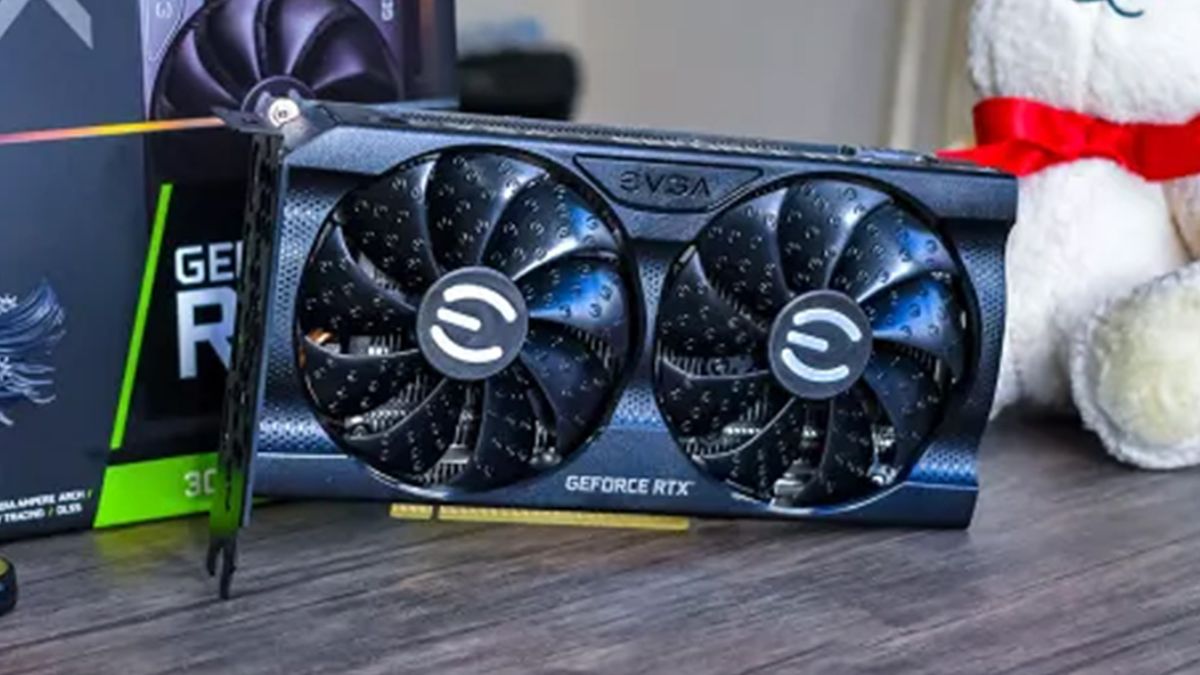
Nothing to be seen anywhere else and once again tumbleweeds at the lower end of the market. As a result, the old RTX 3060 remained a big seller: the 12GB flavor, with that VRAM load turned out to be a definite carrot for some gamers, despite rumors mid-year that Nvidia might discontinue this model.
In fact, the RTX 3060 is still the most popular GPU according to Steam’s hardware survey, and the RTX 4060 also makes good gains – that graphics card is still our top pick for 1080p gaming (and it’s solid for 1440p, too).
Despite many rumors suggesting a 2024 launch earlier in the year, we didn’t see the RTX 5000 series appear this year, and Nvidia is now expected to launch new RTX 5090 and 5080 (and possibly RTX 5070) GPUs in the very early 2025 at CES.
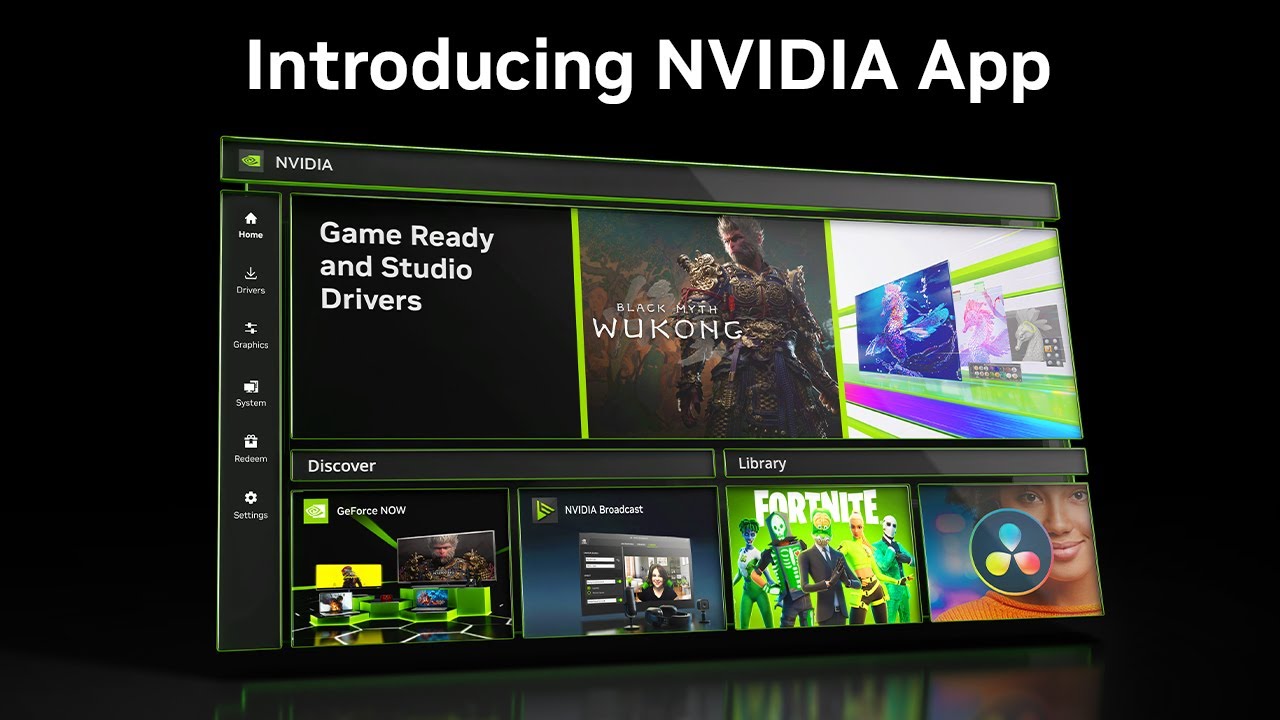
Look
There was also super new software
Generally speaking, Nvidia GPU owners have had a somewhat rocky relationship with the GeForce Experience. A good portion of gamers with an Nvidia graphics card preferred to simply install the graphics driver and not bother at all with the add-on software, GeForce Experience, and Team Green took the hint. In 2024, Nvidia retains GeForce Experience and creates a completely new official app.
The Nvidia app (oh, the hours and hours that must have been spent in marketing meetings to come up with that name) hit beta in February 2024. It was announced as an all-in-one replacement for GeForce Experience and Nvidia. Control panel, plus the RTX experience. Instead, all of these separate pieces were housed under one convenient umbrella (where the controller facilities are also handled).
The Nvidia application emerged as a full version in November, after having worked intensively throughout the year. Nvidia even actively sought feedback from gamers on which legacy features should be retained and more.
That feedback was heard in terms of implementing things like game framerate and latency information (and much more) in the revamped overlay for the Nvidia app, and it offered some clever new features, like easy GPU overclocking . The new app was generally well received, it seems to run smoothly and responsively in the main version, and thankfully there are no onerous account or login requirements here either; hopefully that will continue to be the case in the future.
However, there was one notable issue that arose in mid-December, when reports emerged that an option in the Nvidia app could cause a significant slowdown in games’ frame rates. Nvidia is currently investigating that issue (at the time of writing) and there is some sort of fix for the apparent bug.
Also on the software side of the equation, DLSS continued to dominate the frame rate boosting scene and remains a powerful weapon in Nvidia’s arsenal of GPU tricks.
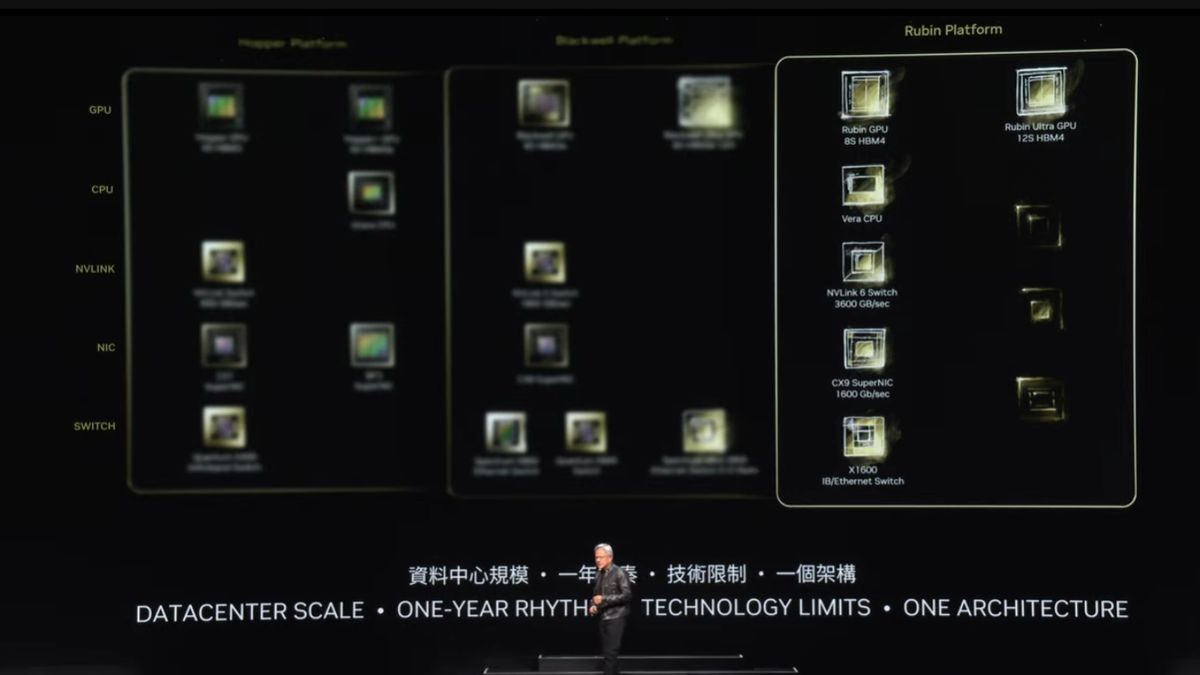
AI FTW still
Naturally, AI continued to be an area where Nvidia achieved great successes this year and, as we already mentioned, helped drive the company’s market value to the sky (or to the moon, perhaps we should say).
Unsurprisingly, the Green team was keen to move forward with the new Rubin AI chips, Blackwell’s successor for AI workloads, which was announced just a few months after the latter.
It’s possible that Rubin, which was the focus of Computex 2024, could power GeForce graphics cards that will follow into the next generation, mirroring the way Blackwell was implemented for AI GPUs and RTX 5000 desktop boards, so this It could have been our first (more or less). de) sighting of RTX 6000. (If RTX 6000 ever happens, and here at TechRadar, we have argued why there are valid reasons to doubt this, namely the gigantic gains in the world of AI, about which there are many concerns important, it must be said).

GeForce Now continues to evolve, with a problem
Last year was a big one for Nvidia’s streaming service for PC gamers, with the arrival of the new ‘Ultimate’ subscription (which offers up to 240 frames per second and a lag-free experience; for those with an Internet connection at height, that is).
In early 2024, Nvidia introduced a Day Pass for GeForce Now, allowing you to try out the full service for a day to see how it works for you, and then towards the end of the year a big update for GeForce Now was announced. Mid-level ‘Priority’ Membership. This was renamed “Performance” and Nvidia increased its visual quality from 1080p resolution to 1440p (with ultrawide monitor support on top), all at no additional cost.
At least there was no financial cost, but there was a catch in the form of a monthly time limit imposed on these subscribers (and Ultimate tier members as well). At first glance, limiting playback time was a measure to help Nvidia shorten queues and keep streaming quality smooth, but it didn’t go over well with some subscribers, who felt the 100-hour limit was too stingy. .
Note that the new time limit will not take effect until the beginning of 2025 and will not apply to existing subscribers until 2026. Still, this led to many threats to abandon GeForce Now in online forums; We’ll just have to see. whether that turns out to be mere noise, or whether a group of subscribers are really about to exit stage left.
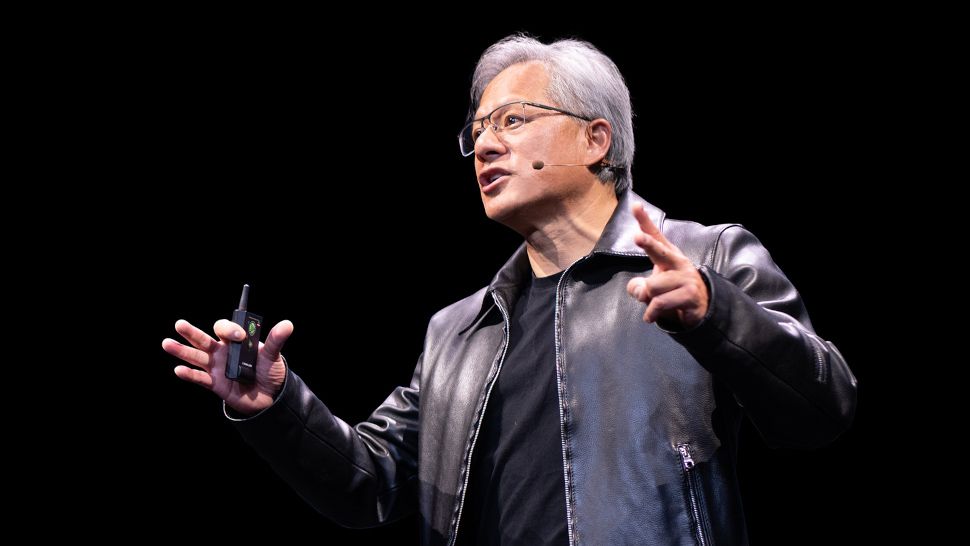
Final thoughts
In 2024, Nvidia added some high-quality graphics cards to its Lovelace range, although the more affordable end of the GPU market was left completely underserved (again). The company continues to dominate the desktop graphics card field, and that probably won’t change in the near future, especially not at the top end where Nvidia won’t even be challenged in the future, if the rumors are correct.
The Nvidia app was a highlight for Team Green, and it’s great to see that player feedback helped shape the software, and DLSS also helped develop and bolster the success of their consumer GPU.
However, AI was the big moneymaker and driving force behind Nvidia’s explosion to become the most valuable company in the world.
As we mentioned above, the concern for PC gamers could be that the runaway success of AI GPUs (if it continues, and it doesn’t seem like a good idea to bet against that) could mean that Nvidia’s gaming graphics cards will eventually be left behind. sideways. , or perhaps do without it altogether. With AMD also looking to capitalize on AI and Intel’s GPU prospects looking shakier these days, all of this raises some concern about the future of desktop graphics cards in the consumer market.

